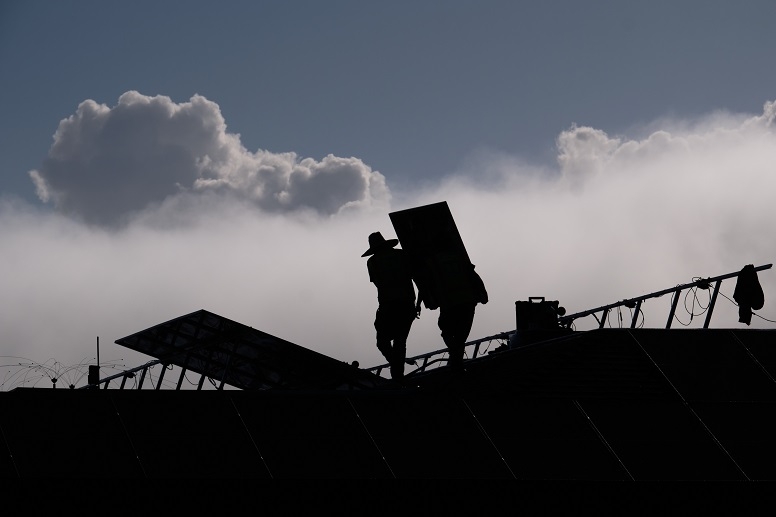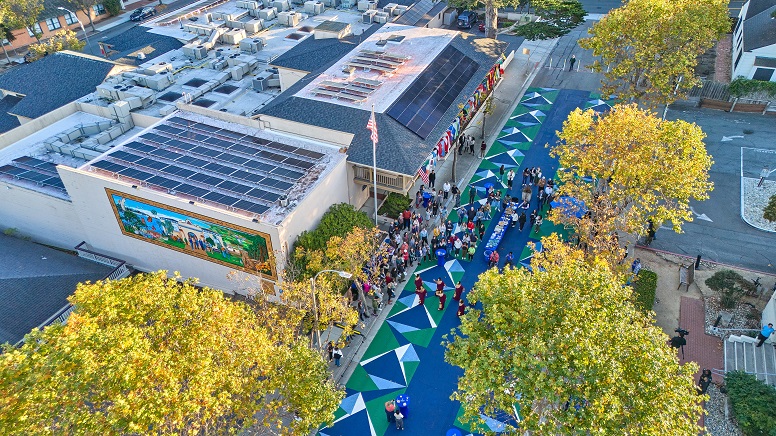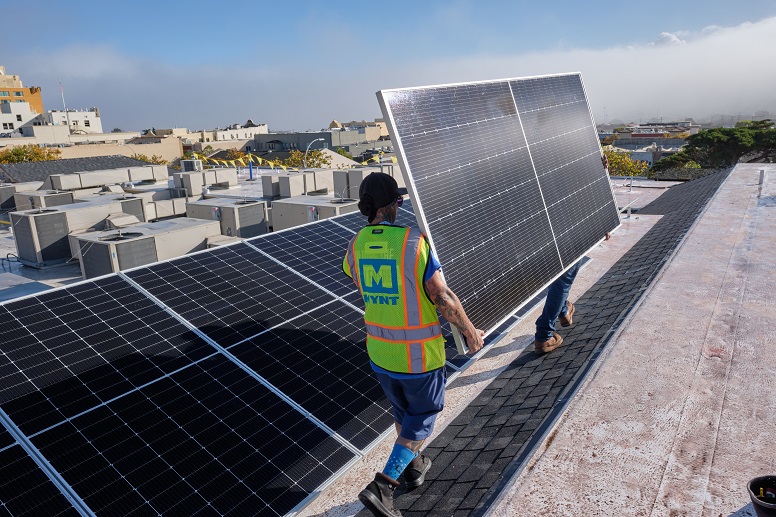Middlebury Institute Launches New Online MPA in Sustainability
| by Sierra Abukins
The 20-month online degree prepares students to design and lead sustainability and climate initiatives for governments, nonprofits, and businesses.

It’s a good thing that California’s sunny.
That sunshine is being turned into solar power thanks to the recent installation of solar panels on eight buildings across campus.
“We want to be as energy efficient and sustainable as possible,” said facilities director Andrew Hernandez, who spearheaded the project. “This is a significant step forward in our climate action plan.”

The new solar panels are expected to generate over 60 percent of the total campus electricity. The solar design and installation was completed by MYNT Systems, an energy company in Santa Cruz that employs several Institute alumni, including Annie Otfinoski, who graduated with a master’s in environmental policy in 2021.
“What took the longest was developing the project and the decision-making process,” said Otfinoski. “There are a lot of things to consider when financing a large solar project, but the next steps were the quickest and easiest, as our engineers did all the design; then we got all the necessary permits and got to building.”
The project was made possible through a 20-year power purchase agreement (PPA) with Wunder Power, which financed the project and will own and operate the solar arrays. The agreement provides Middlebury a cost-effective source of on-campus renewable energy.
Students also played a key role in moving the project forward, including participating in initial tours and discussions and helping to assess estimates for the project. In addition, student Sustainability Council graduate assistants conduct annual greenhouse gas audits, which Hernandez said has been extremely helpful during the implementation of the project. The solar project builds on previous sustainability initiatives, including switching to LED lighting, which significantly reduced electricity usage, and installing an EV charging station.

The project focuses on the largest buildings with the most significant energy usage, and includes the Samson Student Center, Holland Center, the library, Center for Nonproliferation, and the Casa Fuente, Morse, McGowan, and McCone buildings.
The systems on Morse and Holland are officially up and running and the rest will be coming online in early 2024.
“The Institute is going to save over 10 percent on their utility costs and reduce their emissions,” said Otfinoski. “Most of the power on campus is being offset with the solar system, which is a huge sustainability effort.”
| by Sierra Abukins
The 20-month online degree prepares students to design and lead sustainability and climate initiatives for governments, nonprofits, and businesses.
| by Mark Anderson
The Institute’s Center for the Blue Economy has contributed its research and policy heft to a national coalition that has helped get big wins on making sure that federal climate change efforts include the ocean.
| by Sierra Abukins
Incoming students come to the Institute having seen the effects of climate change firsthand in countries across the world.